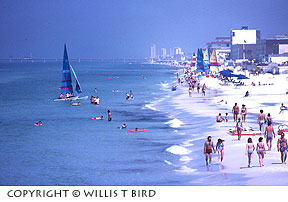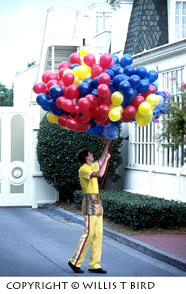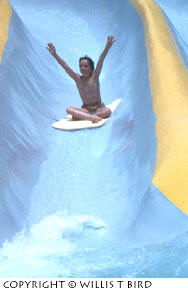
The seaside provides many photo opportunities. If you do decide to take a good camera to the beach, watch out for sand and the combination of salt air and water.
The temperature gauge is rising and the sun is growing hotter day by day. It’s a wonderful time to use your camera to save memories. I think summers are the parts of my youth I remember best. I wish I’d been into photography back then, but I was lucky, because my parents were, and they captured my youth for me. I don’t think the pictures would’ve been the same had I been the one behind the lens. My outlook would’ve been different from that of my parents, but I thank them for doing what I didn’t.
You don’t have to have expensive equipment. One-time-use cameras can take fine shots. I carried one with me when I went on a cruise to the Bahamas a few years back, and it produced some remarkable pictures. Even the one-time-use underwater camera works well–both above and beneath the surface. Try using a “throwaway,” even if you own one of the nicer 35mm cameras. When you’re near saltwater and sand, you may want to protect your expensive equipment by leaving it home.

Seek out an unusual photos, like this balloon man. They can add flavor to your memories.
If you use your 35mm SLR or digital and have a polar filter, consider trying the filter. It can tone down the glare from sand and water. While you’re protecting your camera, don’t forget to take care of yourself, as well. If you’re shooting sunsets–which can be spectacular in the summer–be careful to shield your eyes and don’t look directly into the sun. You can burn holes in your retinas by looking through a telephoto lens if you’re not careful. Also, remember to slather yourself with sunscreen to keep the UV rays from giving you skin cancer in the future. In fact, try not to be out in the hottest part of the day or make sure your skin is covered by a long sleeve shirt and pants.
Great subjects are everywhere in the summer. There are parties and theme parks filled with subjects available to almost everyone. Even though you’re enthusiastic about being the on-scene photographer, remember to turn your camera over to someone else once in a while, so you can be in some of the photos. There’s nothing more disappointing than looking back at your vacation photos and wondering where you were. Another good idea when you’re shooting at an event or a location such as a big theme park is to seek out an unusual photo, like the balloon man illustrated here. Everyone gets photos of the Disney castle. Search for the less obvious photos that are all around you. They can add flavor to your memories.
If you go canoeing and want to take your camera along, be sure to pack your equipment in a waterproof bag made especially for such an occasion. A good selection can be found at Amazon. (There are many other places to find waterproof bags or cases for any number of sizes of cameras. Try a search engine and enter “waterproof+camera+bags” to see what turns up.) I once turned over in a canoe, a wet trick that doesn’t take long to happen. The dip can be refreshing, but it’s not good for equipment. In my experience, I was fortunate to be in only waist-deep water, so I could retrieve my belongings without too much difficulty. I was carrying only a waterproof disposable camera that survived just fine.

Remember to protect your camera from moisture. A dip in the water can be refreshing, but it’s not good for equipment.
If you do decide to take a good camera to the beach, watch out for sand and the combination of salt air and water. Keep both out away from your camera, if at all possible. When changing lenses, turn your back to the wind and hold the camera close to you to keep sand from blowing into the camera body. Take good, approved, lens-cleaning material with you–and use it. It would be a good idea to clean the outside of your camera as soon as you arrive home to make sure you don’t have a problem. Cameras hate saltwater and sand. You will, too, if you have to have yours repaired after an innocent visit to the beach.
Also, if you plan to keep your camera in the car with you for any length of time—especially in the summer, you need to protect it from the heat. As long as you have the air conditioner on, it should be okay. However, even when the interior air in the car is cool, keep your camera out of the direct rays of the sun. If you absolutely must leave your camera in the trunk while you eat or play elsewhere, you’ll need to bring along special accommodations for it. One idea would be to store your camera in a cooler with a frozen ice pack. Make sure the moisture from the ice pack can’t get to the camera by wrapping one or the other in a watertight plastic bag. Make sure the top is set tight. This should protect the camera for a while.
Most of this column has been about protecting you and your camera during the summer. Doing both can add to your summertime fun. Doing neither can ruin it. The main thing is to take your camera with you to record your fun so you can relive it over and over.
Have fun, keep safe, and protect your camera equipment!
by Willis T. Bird

Leave a Reply